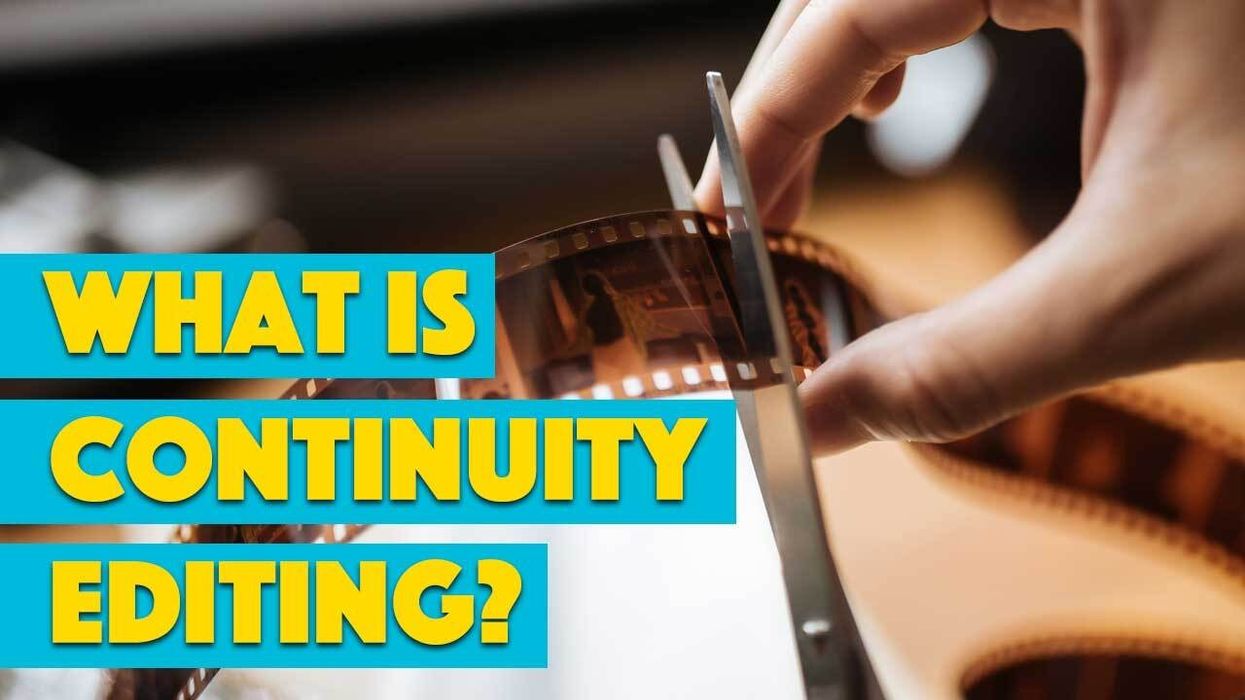Community, Leadership, Experimentation, Diversity, & Education
Pittsburgh Arts, Regional Theatre, New Work, Producing, Copyright, Labor Unions,
New Products, Coping Skills, J-O-Bs...
Theatre industry news, University & School of Drama Announcements, plus occasional course support for
Carnegie Mellon School of Drama Faculty, Staff, Students, and Alumni.
CMU School of Drama
Wednesday, January 24, 2024
Editing 101: What is Continuity Editing?
nofilmschool.com: We're getting so used to watching film and television that we rarely notice the very basic techniques used day in and out. Some of the very foundations of cinema and television have become so ingrained into our sense as viewers that they go unrecognized.
The epitome of that reality is continuity editing.
Subscribe to:
Post Comments (Atom)

4 comments:
In high school, I took a film literature class where we actually discussed and defined a lot of these terms. I remember learning continuity editing and how it was a little bit hard for me to grasp, and I feel like this article would have been a really helpful resource. It’s kind of hard to fully grasp each of these techniques until you see an actual example of one in film, which is why I really like the fact that this article included so many videos and examples for each term. For a lot of these terms, I did not really understand that I was actually using them when editing until I learned them. I often relied on the idea of continuity editing when I was interning at my local video production company and editing videos for them. I especially explored these ideas when I had to include several different video sources that didn’t really otherwise go together. I had to be very intentional on where I placed certain clips and information to make sure the story fit together well and made sense to the viewer.
I found this article fascinating and informative. Personally I do not know very much about film editing, I know some basics but not a lot of the official terminology for the things I know. I have heard of Continuity editing before but I never quite knew what it was. I think the article does a pretty good job of explaining it. Continuity editing has to be seamless and almost appear invisible. I have always admired really good continuity editing because while different scenes and clips are flashing across the screen they all somehow blend together without being too distracting. It is only when I focus in on the filming that I really notice the clips switching. However, when watching everything flows cohesively and without interruption to the audience's experience. Overall I thought this article was very informative as someone who does not have a lot of knowledge of film editing.
I think it’s really interesting to think about how editing can be perceived as a medium or an art form. Similar to a lot of the work we do, it can be very easily overlooked unless it is very bad or very good. I do not have a lot of knowledge surrounding the editing process when it comes to film or media, but I would be interested in learning more. My best guess is that it would be similar to the design process for the show in terms of what communications look like and what types of steps and production processes and passes happen. I do have a fondness for bad movies as well, and my favorite editing choice in a movie has to be in some Christmas movie that I was watching where the characters were having a sprinkle fight, and the sprinkles were very poorly) added into the film digitally.
I knew what each type of cut meant, and I could think of examples of where I had seen them before but I never thought to look up the names of the type of cuts. Editing takes such a large portion of a film or television process because decisions like these take time and artistry to craft. Sometimes we think we see a movie and go “wow X actors were so good,” but I rarely hear non movie-buffs ever mention the continuity of the scenes via the cuts used. Poorly edited movies can sometimes lead people to call the actors or design bad, and other times well edited movies can make a bad actor or design choices in set and costumes look OK. There’s a lot of dramaturgy behind deciding what angles and timings of shots should go where and it’s an art form I’d be interested in learning more about.
Post a Comment